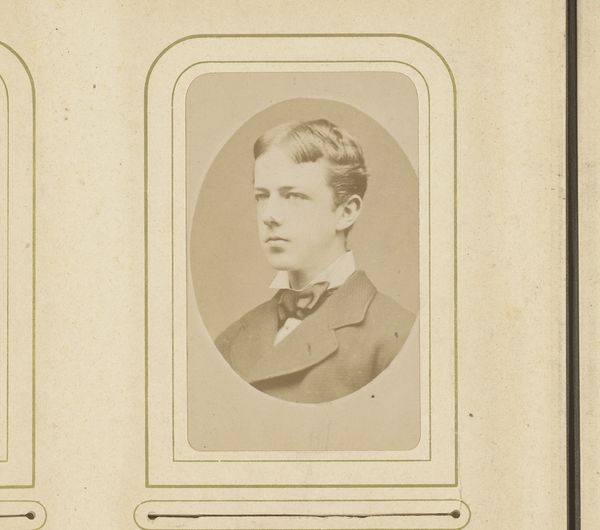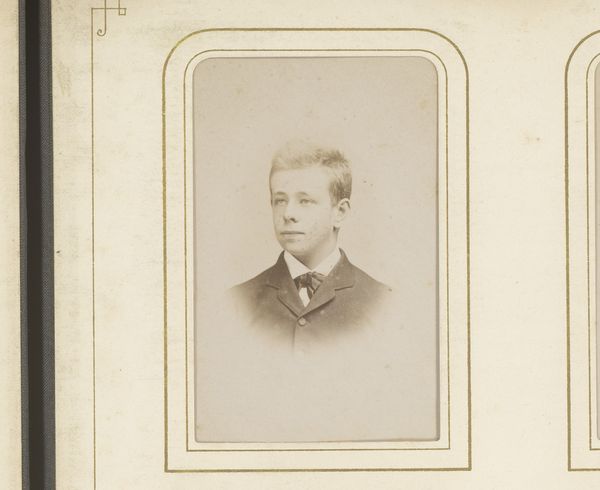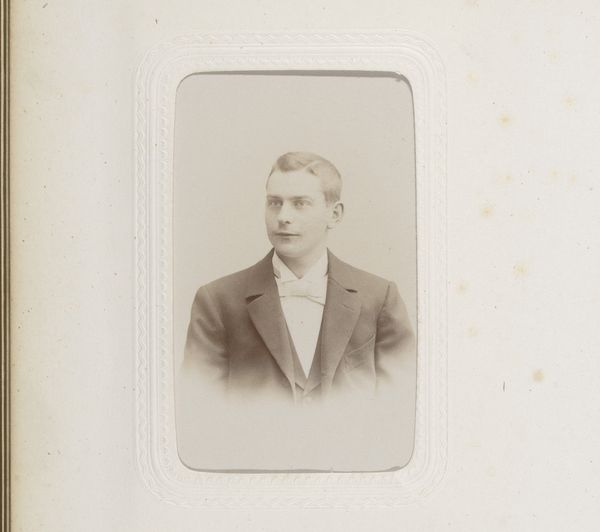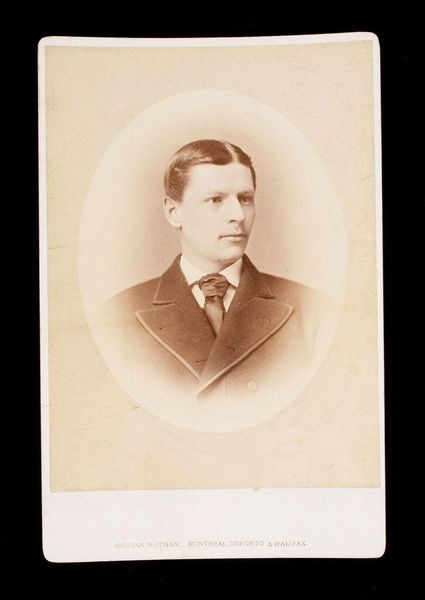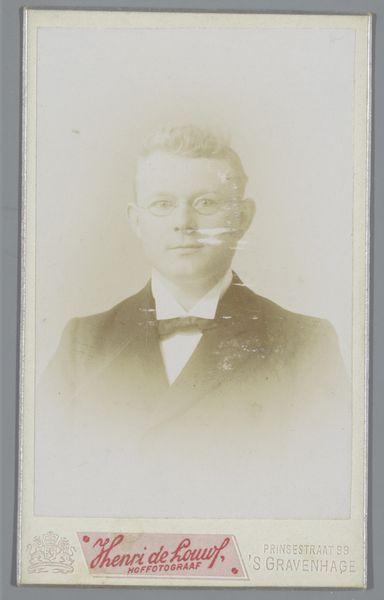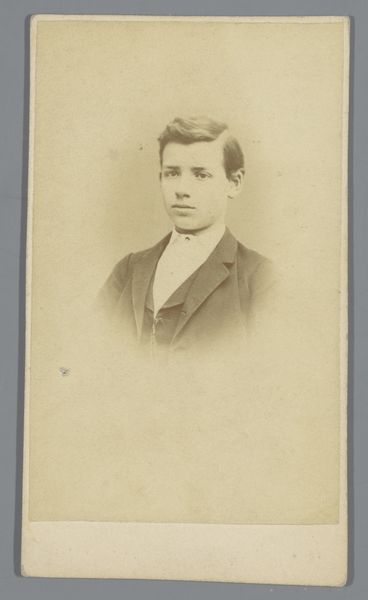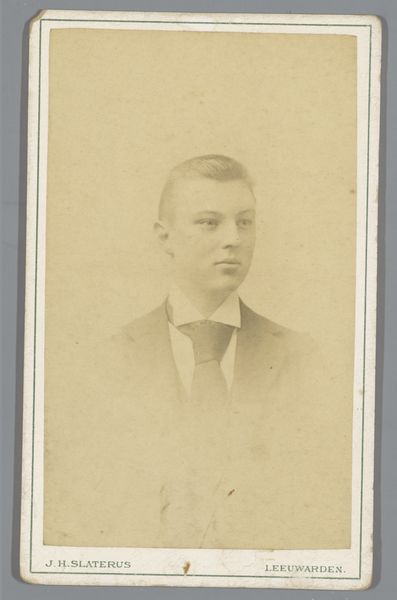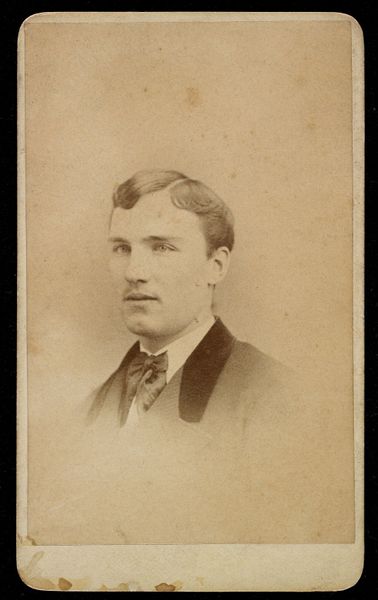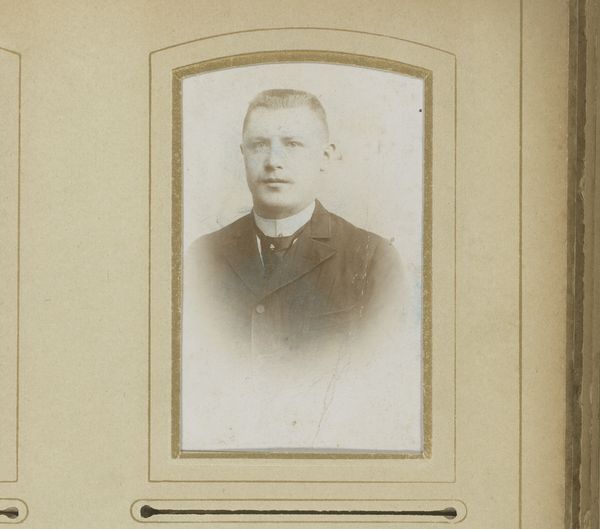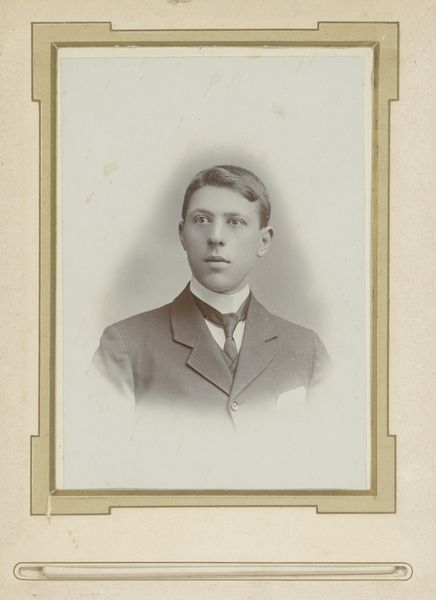
Dimensions: height 84 mm, width 53 mm
Copyright: Rijks Museum: Open Domain
Editor: This is Charles Reutlinger's "Portret van een jonge man," a gelatin silver print from around 1850 to 1881. It has this delicate, almost faded quality. What strikes me is the formal attire captured through the then-new medium of photography. What’s your perspective on this work? Curator: Well, considering this work through a materialist lens, I'm drawn to the relationship between the subject, the photographer, and the technologies used. We see here how the materials—the gelatin silver process—dictated the aesthetic. Think about the labor involved: preparing the chemicals, posing the sitter for a certain duration under specific lighting. It reveals a specific social dynamic tied to production and consumption of images. What kind of access was required for the sitter to commission it? Editor: So, you’re focusing on how the process shaped the image and what that reveals about the social conditions of the time? Curator: Exactly. This image is more than just a representation; it's an object born out of a particular set of social, economic, and technological circumstances. The photograph had to compete with painted portraiture, establishing its market through perceived qualities like truthfulness but enabled via technology. This changes our understanding of what a portrait could communicate about someone's identity or status compared with earlier mediums. It changed how identities were presented, packaged and exchanged. How do you see that operating here? Editor: I never thought of it that way before, but I see how focusing on the gelatin silver print itself and its making broadens our perspective beyond just seeing the young man in the photo. It shows the confluence of different material forces at that specific moment. Curator: Indeed. Examining those forces offers a deeper engagement with art.
Comments
No comments
Be the first to comment and join the conversation on the ultimate creative platform.

